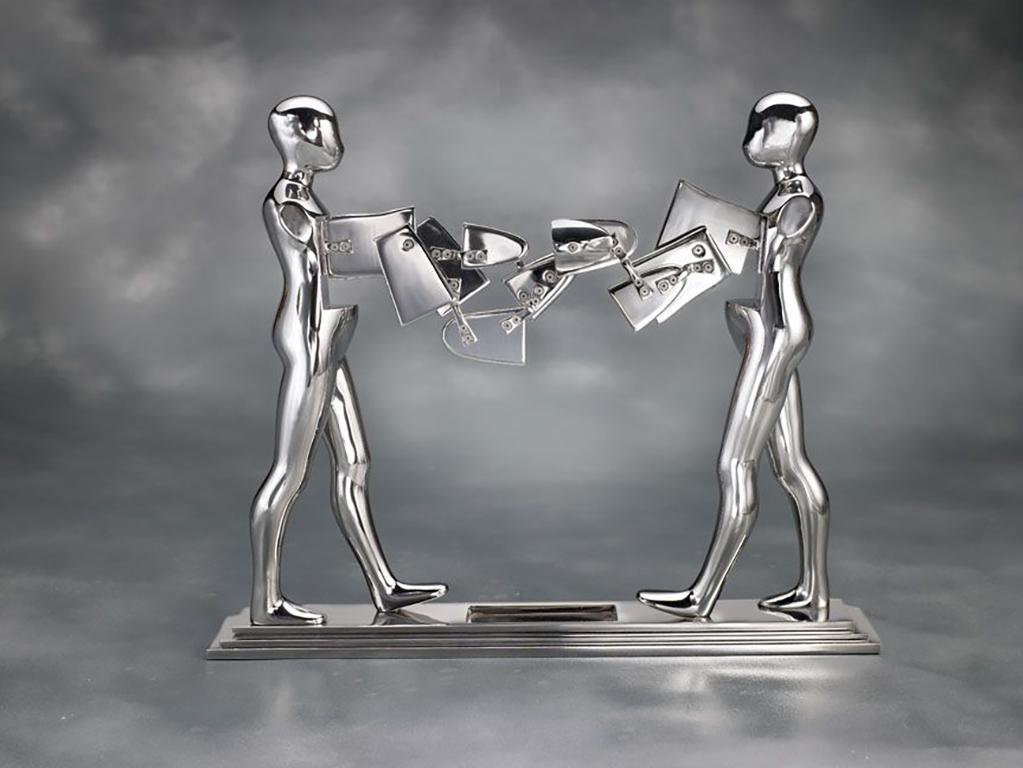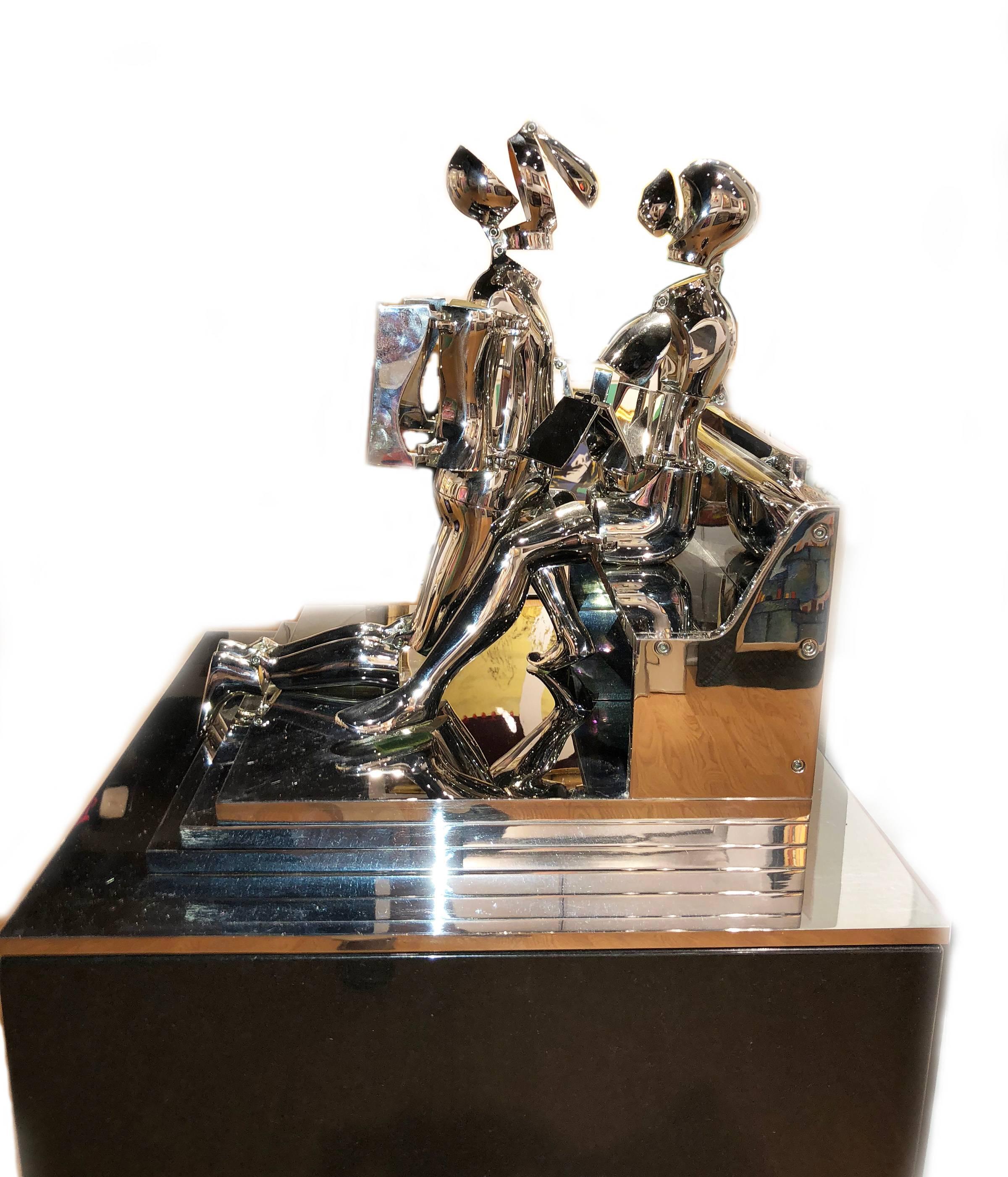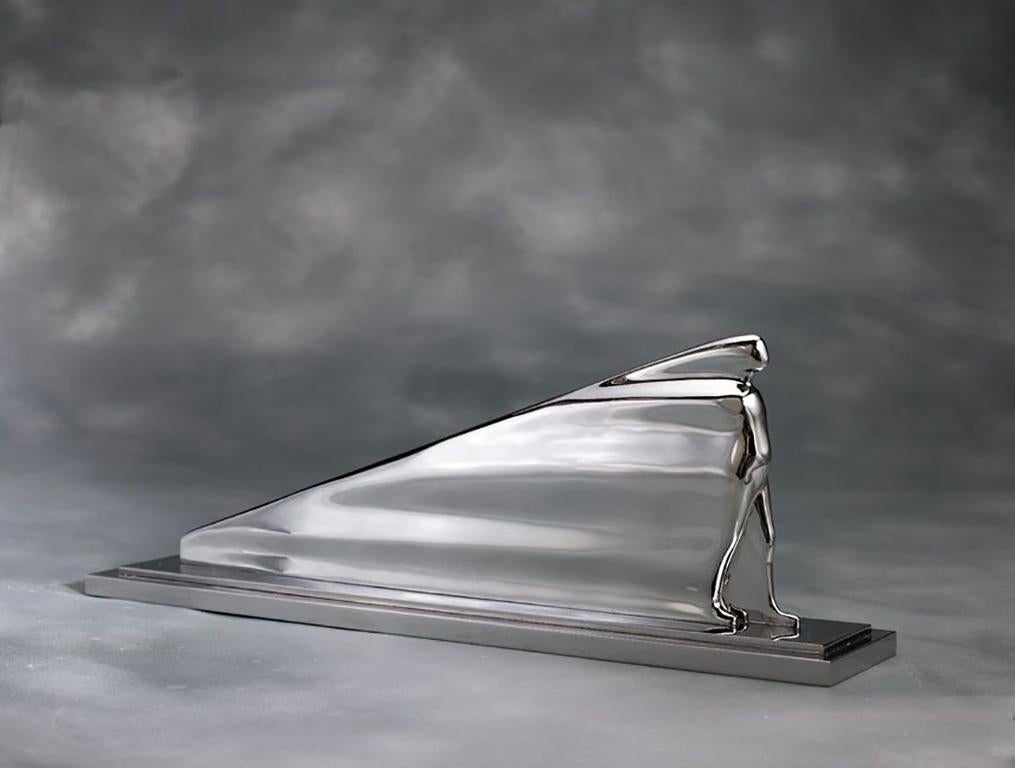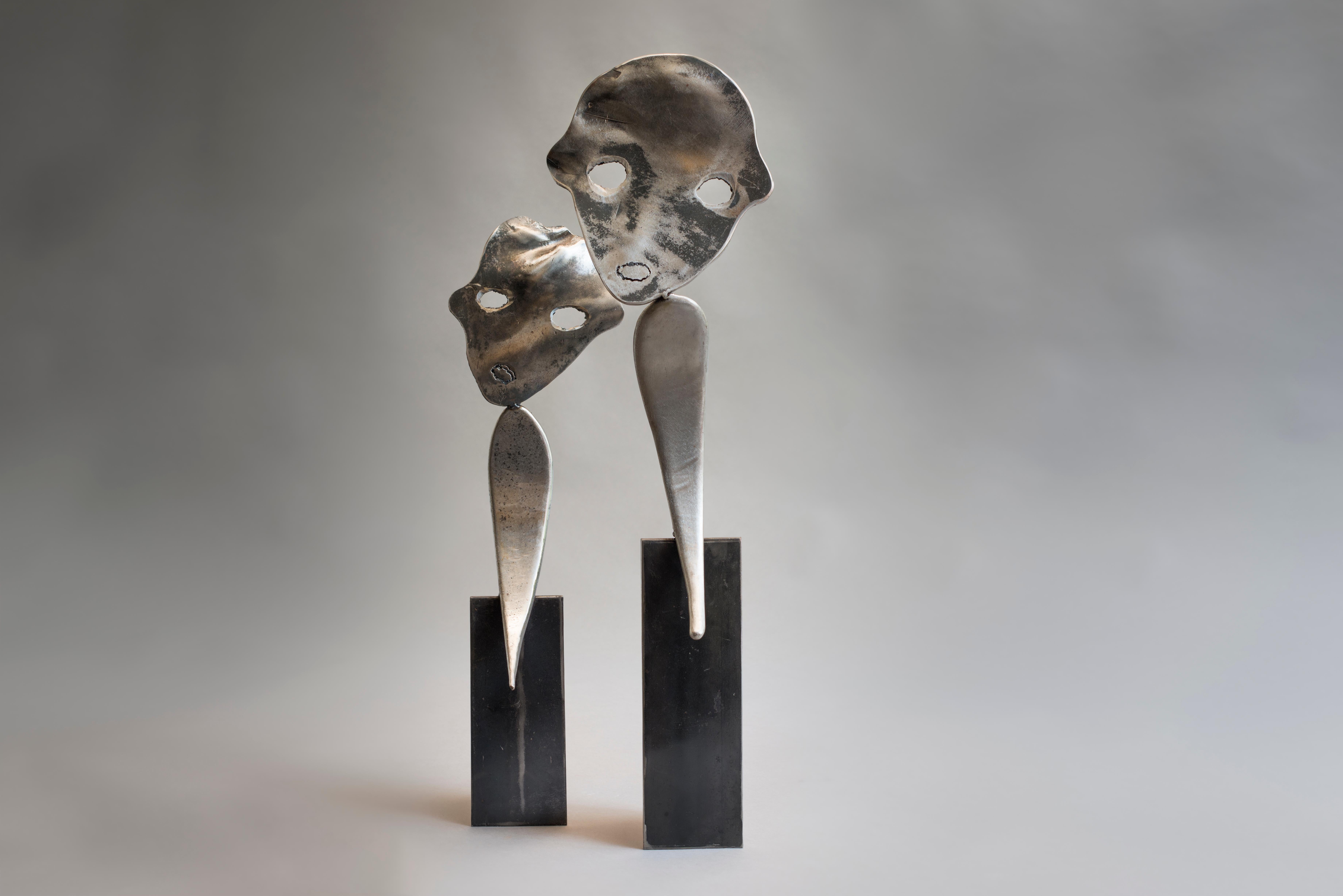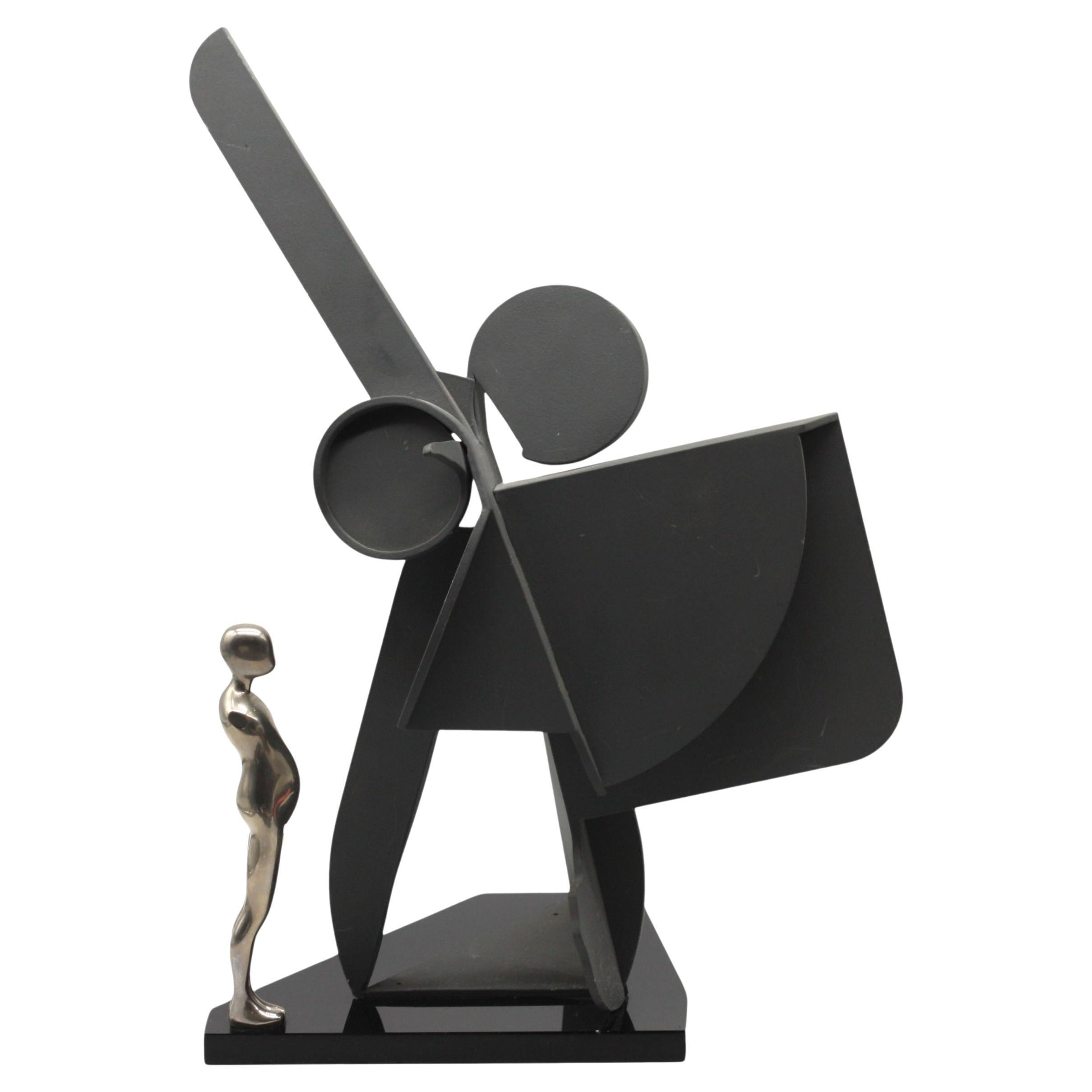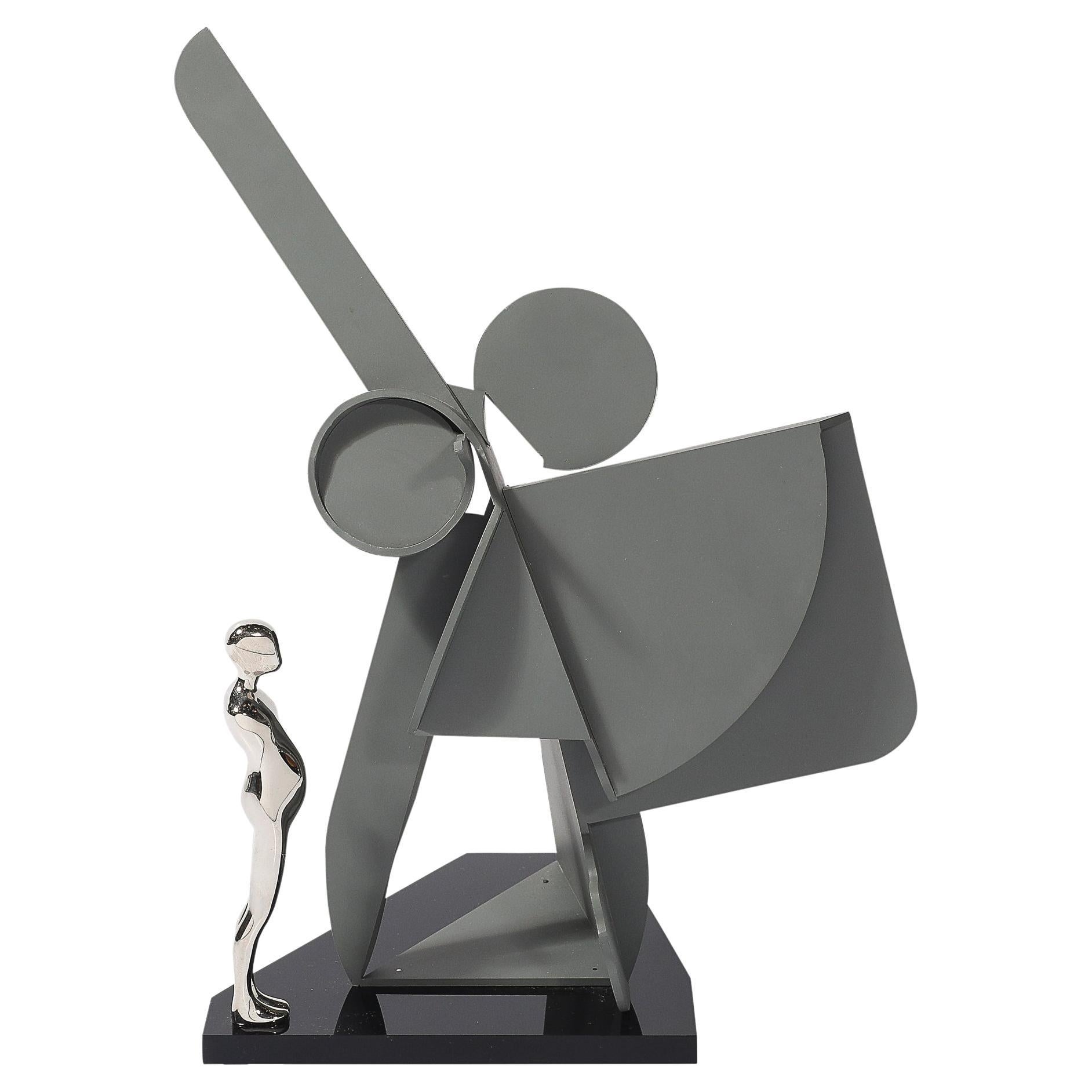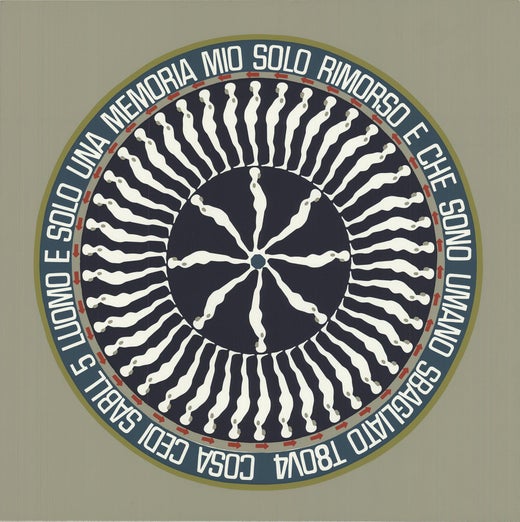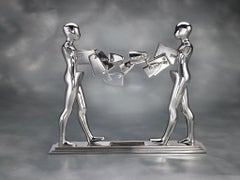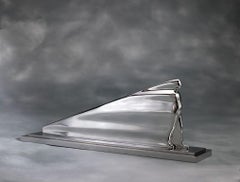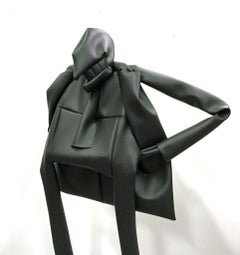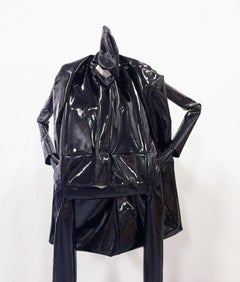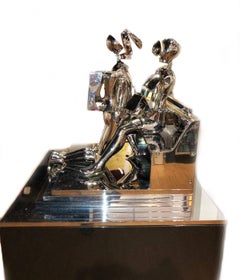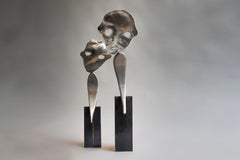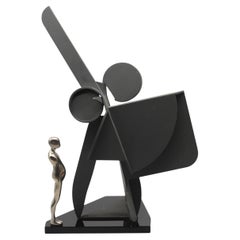Items Similar to Double Flapman
Want more images or videos?
Request additional images or videos from the seller
1 of 2
Ernest TrovaDouble Flapman1983
1983
$55,000
£42,620.07
€48,365.10
CA$78,829.20
A$86,569.99
CHF 44,562.92
MX$1,035,835.22
NOK 567,384.18
SEK 531,723.49
DKK 361,210.23
About the Item
AP 2
Ernest Trova was an artist whose signature creation, a gleaming humanoid known as “Falling Man,” appeared in a series of sculptures and paintings and became a symbol of an imperfect humanity hurtling into the future. Mr. Trova was largely known as a sculptor, but his “Falling Man,” a standard of Pop Art, began life as a painted figure, taking shape on his easel in the early 1960s. Faceless, armless, with a hint of a belly and, its name notwithstanding, of indeterminate sex, the figure struck a variety of poses, sometimes juxtaposed with other like figures, sometimes with mechanical appendages.
In October 1963 his one-man show, “Falling Man Paintings,” was the inaugural exhibition of the Pace Gallery on West 57th Street in Manhattan; it sold out, with the works purchased by the Museum of Modern Art, the Whitney Museum, the architect Philip Johnson and others. In three dimensions, the “Falling Man” figure was made from different materials over the years — nickel and chrome-plated bronze, enamel on aluminum, stainless steel — and often, like the Oscar statuette, was polished to an industrial sheen. It was clearly a space age creation, a forerunner of C3PO, the golden robot in “Star Wars.”
“He found the space age both inspiring and dehumanizing,” Arne Glimcher, who founded the Pace Gallery, now PaceWildenstein, said in an interview on Friday. By the end of the 1960s, “Falling Man” had become Mr. Trova’s trademark, provoking Hilton Kramer, the art critic of The New York Times, to write that Mr. Trova had subjected his favorite figure “to almost as many variations as the Kama Sutra describes for the act of love.”
Ernest Tino Trova Jr. was born in St. Louis on Feb. 19, 1927. Shortly after his high school graduation his father, an industrial tool designer and inventor, died, and young Ernie, as he was known, went to work, most significantly as a window dresser for a department store. His early paintings were in the Abstract Expressionist mode, but his attentiveness to the mannequins had an influence on his art. Through the 1970s and 1980s he continued with “Falling Man,” though he also became interested in formalized, almost mechanical-seeming landscapes, and the figures began to appear, reduced in size, within the context of abstractly rendered gardens.
A self-taught artist with an impish wit and an eccentric turn of mind, Mr. Trova craved the recognition that was available to artists only in New York City, but he never visited for more than a week at a time and made almost no friends among New York artists. He did befriend Ezra Pound. As a fevered fan of Julio Iglesias, he went to the singer’s concerts all over the United States. “Ernie had a fabulous fantasy life,” Richard Solomon, the president of Pace Prints, the publishing arm of PaceWildenstein, said in an interview. “He had a persona he used to hide behind that he called ‘Junior Person.’ He was a wonderful man, but an oddball to beat the band.”
Mr. Trova left the Pace Gallery in the mid-1980s and signed with an inexperienced dealer in St. Louis. His profile went into decline, except in his hometown, where his donation of many of his works helped create the Laumeier Sculpture Park. He continued to work until shortly before his death. Most recently he was making collages using magazine photographs of meat.n“There’s a great one of a lamb chop sitting on a park bench,” said Matthew Strauss, a friend who runs White Flag Projects, a nonprofit gallery in St. Louis. Among Mr. Trova’s interests were toys — he amassed a huge and valuable collection — and Walt Disney characters, especially Mickey Mouse. “ ‘Falling Man’ was to Ernie as Mickey was to Disney,” Mr. Strauss said, “a standard character he could amend for his own purposes, but that would still retain its essence.”
- Creator:Ernest Trova (1927 - 2009, American)
- Creation Year:1983
- Dimensions:Height: 28.25 in (71.76 cm)Width: 10 in (25.4 cm)Depth: 6.5 in (16.51 cm)
- Medium:
- Movement & Style:
- Period:
- Condition:
- Gallery Location:Boca Raton, FL
- Reference Number:1stDibs: LU135426443912
Ernest Trova
In the early 1960s, St. Louis Sculptor Ernest Trova—who was entirely self-taught—began developing his pivotal theme of Falling Man, a stark and startling image that combines references to classical sculpture with an industrial aesthetic. In his Profile Canto series, Falling Man—depicted as an androgynous, mechanical figure—is folded and segmented as to be nearly undetectable amid the various geometric forms that comprise these works.
About the Seller
5.0
Recognized Seller
These prestigious sellers are industry leaders and represent the highest echelon for item quality and design.
Established in 1989
1stDibs seller since 2020
26 sales on 1stDibs
Typical response time: 7 hours
- ShippingRetrieving quote...Shipping from: Boca Raton, FL
- Return Policy
More From This Seller
View AllDouble Walking Figure
By Ernest Trova
Located in Boca Raton, FL
rnest Trova was an artist whose signature creation, a gleaming humanoid known as “Falling Man,” appeared in a series of sculptures and paintings and became a symbol of an imperfect humanity hurtling into the future. Mr. Trova was largely known as a sculptor, but his “Falling Man,” a standard of Pop Art, began life as a painted figure, taking shape on his easel in the early 1960s. Faceless, armless, with a hint of a belly and, its name notwithstanding, of indeterminate sex, the figure struck a variety of poses, sometimes juxtaposed with other like figures, sometimes with mechanical appendages.
In October 1963 his one-man show, “Falling Man Paintings,” was the inaugural exhibition of the Pace Gallery on West 57th Street in Manhattan; it sold out, with the works purchased by the Museum of Modern Art, the Whitney Museum, the architect Philip Johnson and others. In three dimensions, the “Falling Man” figure was made from different materials over the years — nickel and chrome-plated bronze, enamel on aluminum, stainless steel — and often, like the Oscar statuette, was polished to an industrial sheen. It was clearly a space age creation, a forerunner of C3PO, the golden robot in “Star Wars.”
“He found the space age both inspiring and dehumanizing,” Arne Glimcher, who founded the Pace Gallery, now PaceWildenstein, said in an interview on Friday. By the end of the 1960s, “Falling Man” had become Mr. Trova’s trademark, provoking Hilton Kramer, the art critic of The New York Times, to write that Mr. Trova had subjected his favorite figure “to almost as many variations as the Kama Sutra describes for the act of love.”
Ernest Tino Trova Jr. was born in St. Louis on Feb. 19, 1927. Shortly after his high school graduation his father, an industrial tool designer and inventor, died, and young Ernie, as he was known, went to work, most significantly as a window dresser for a department store. His early paintings were in the Abstract Expressionist mode, but his attentiveness to the mannequins had an influence on his art. Through the 1970s and 1980s he continued with “Falling Man,” though he also became interested in formalized, almost mechanical-seeming landscapes, and the figures began to appear, reduced in size, within the context of abstractly rendered gardens.
A self-taught artist with an impish wit and an eccentric turn of mind, Mr. Trova craved the recognition that was available to artists only in New York City, but he never visited for more than a week at a time and made almost no friends among New York artists. He did befriend Ezra Pound. As a fevered fan of Julio Iglesias, he went to the singer’s concerts all over the United States. “Ernie had a fabulous fantasy life,” Richard Solomon, the president of Pace Prints, the publishing arm of PaceWildenstein, said in an interview. “He had a persona he used to hide behind that he called ‘Junior Person.’ He was a wonderful man, but an oddball to beat the band.”
Mr. Trova left the Pace Gallery in the mid-1980s and signed with an inexperienced dealer in St. Louis. His profile went into decline, except in his hometown, where his donation of many of his works helped create the Laumeier Sculpture Park. He continued to work until shortly before his death. Most recently he was making collages using magazine...
Category
20th Century Figurative Sculptures
Materials
Stainless Steel
Flowing Man
By Ernest Trova
Located in Boca Raton, FL
Edition 37/99
Category
21st Century and Contemporary Contemporary Figurative Sculptures
Materials
Stainless Steel
Onward
By William King (b.1925)
Located in Boca Raton, FL
Vinyl and Aluminum
Sculptor William King is widely renowned for his signature flattened and stilt-legged figures, gesturing dramatically. Humorous and rife with social commentary, h...
Category
21st Century and Contemporary Contemporary Figurative Sculptures
Materials
Mixed Media
I'm Trying
By William King (b.1925)
Located in Boca Raton, FL
Vinyl and Aluminum
Sculptor William King is widely renowned for his signature flattened and stilt-legged figures, gesturing dramatically. Humorous and rife with social commentary, h...
Category
21st Century and Contemporary Contemporary Figurative Sculptures
Materials
Mixed Media
Untitled
By William King (b.1925)
Located in Boca Raton, FL
Vinyl and Aluminum
Sculptor William King is widely renowned for his signature flattened and stilt-legged figures, gesturing dramatically. Humorous and rife with social commentary, h...
Category
21st Century and Contemporary Contemporary Figurative Sculptures
Materials
Mixed Media
Take It or Leave It
By William King (b.1925)
Located in Boca Raton, FL
Take It Or leave It is a life size sculpture constructed of mylar over an aluminum frame.
Sculptor William King is widely renowned for his signature flattened and stilt-legged figu...
Category
20th Century Contemporary Figurative Sculptures
Materials
Mylar, Mixed Media
You May Also Like
The Encounter
By Ernest Trova
Located in Missouri, MO
Ernest Trova
"The Encounter" 1994
Chrome Plated Steel
Approx 24 x 26 x 24 inches
Edition 1/8
Known for his Falling Man series in abstract figural sculpture, he created hard-edge ima...
Category
1990s American Modern Figurative Sculptures
Materials
Stainless Steel
Price Upon Request
Twins - Haude Bernabé, 21st Century, Contemporary metal sculpture, figure
By Haude Bernabé
Located in Paris, FR
Born in Brest and with a scientific background, Haude Bernabé has devoted herself to art since the early 1990s. Her first passion was art, the second one...
Category
2010s Contemporary Figurative Sculptures
Materials
Metal
Ernest Trova, (American, 1927-2009) Maquette
Located in West Palm Beach, FL
Ernest Trova, (American, 1927-2009)
Maquette, #83 with 6 in. (falling man) Figure,
the underside with Trova monogram, numbered 6 of 6, dated 1987, cold rolled painted steel, polishe...
Category
20th Century Abstract Sculptures
Materials
Steel
Post-Modernist Sculpture signed Ernest Trova, Profile Canto #83 in Matt Gray
By Ernest Trova
Located in New York, NY
This exceptional Post-Modernist sculpture, titled Profile Canto #83, was created in 1987 by renowned American artist Ernest Trova. A celebrated figure in the contemporary art world, ...
Category
Vintage 1980s American Post-Modern Abstract Sculptures
Materials
Metal, Nickel
James Myford "Two Forms" Aluminum Sculpture
By James C. Myford
Located in Bradenton, FL
Stunning aluminum cast sculpture of "Two Forms" on black marble base by noted sculptor James C. Myford (1940-2014). Myford began creating aluminum sculptures in Pittsburgh, PA in the...
Category
20th Century American Modern Abstract Sculptures
Materials
Marble, Aluminum
"Duet", Abstract, Figurative, Welded Steel Metal Sculpture
By Isobel Folb Sokolow
Located in New York, NY
"Duet" by Isobel Folb Sokolow
Welded found metal steel and gold leaf
Sokolow creates both abstract and figurative metal sculpture for indoor display.
Abstract, Dancing, Dancers, Pe...
Category
1990s Abstract Abstract Sculptures
Materials
Metal, Steel, Gold Leaf
More Ways To Browse
Disney Mickey
Terry Miura
Texas Framed Art Longhorns
Thanh Le
Thoroughbred Paintings
Torino Paintings
Trinity Church New York
Tuxedo Painting
Venice The Grand Canal And Rialto Bridge
Vermouth Poster
Vietnam War Poster
Village People Painting
Vintage Apple Logo
Vintage Bermuda Poster
Vintage Block Calendar
Vintage Camping Tents
Vintage Cancan Dancer
Vintage Fishing Trawler
